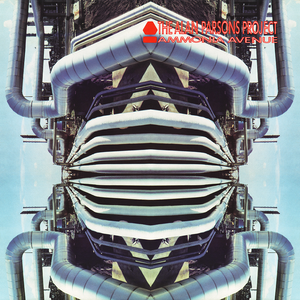Published on Feb 26, 2004
It is, I suppose, no mistake that the Alan Parsons Project,
famous for their theme albums, would create a release in 1984 about
alienation in modern society and the growing inability to really
feel and communicate in the age of high technology. (This was, for
you youngsters, long before the Internet gave rise to the same
concerns. Believe it or not, young ‘uns, people were alienated
before the Internet.) 1984 was also a pivotal year for the band
because they were looking down the barrel marked ‘Following Up A
Big Hit’ — to wit, 1982’s #3 single “Eye In The Sky” and the #7
album of the same name. Two difficult and ambitious goals. Perhaps
it was too much to bite off in one chunk, but they gave it a
shot.
In the end, the question ‘did they succeed?’ can be answered
with a definite ‘yes and no’. Yes, in that 1984’s
Ammonia Avenue did spawn two Top Forty singles and a Top
Fifteen album — but no in that it didn’t do as well as
Eye In The Sky and that the Project would never do so well
on the charts again. Yes in that the album contains some stark,
beautiful tracks about the subject matter, but no in that the album
also includes what this humble but severely fanatical and
opinionated reviewer considers the worst Project track in their
entire recording history.
As one can expect from Parsons’ work, the production and
engineering is flawless; so flawless, in fact, that this is one of
the few Project CDs where the sound is — perhaps purposefully —
just one step short of sterile. Musicianship is brilliant, with the
severely underrated Ian Bairnson turning in several very tasty bits
on guitar. This leaves the songs and the arrangements,
traditionally the areas where Parsons and his band of studio
musicians either rose or fell. In this case, it’s both.
What works is where Parsons leaves in the damn orchestra. Excuse
me for being blunt, but I grew to love the Alan Parsons Project
because in the middle of a lovely rock song, they’d suddenly pop in
a full string section and some brass. There are great sweeping
chunks of
Ammonia Avenue where there’s nary an orchestra pit to be
found, and that absence results in two huge clunkers; “Let Me Go
Home” and the execrable “One Good Reason”, the aforementioned worst
track. One is mediocre rock saved only by Bairnson’s guitar, the
other…um…well, I can’t find anything good to say
about it at all. Sorry.
The rest of the CD is pretty damn good, however. “You Don’t
Believe” is, of all things, a dance tune, and the Project pulls it
off. “Prime Time” and “Don’t Answer Me” were two great singles; the
latter’s Phil Spector homages still send chills down my spine.
“Pipeline” is my favorite Parsons instrumental of all time, and
“Dancing On A High Wire” is a brooding, complex song that bears
repeated listen. In the final summary,
Ammonia Avenue is a good album, but paying more attention to
the Project’s orchestral and progressive roots might have made it a
great album.
Maybe it’s for the best that the charts weren’t quite as kind to
Ammonia Avenue; certainly had it been more of a mainstream
success, we might not have gotten to enjoy later, more experimental
work like
Try Anything Once,
Poe, or Parsons’ rumoured upcoming collaboration with the
Crystal Method in electronica. (This is not a joke, folks.) On its
own merits, though,
Ammonia Avenue deserves a walk or two.
